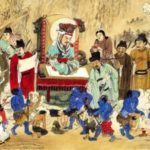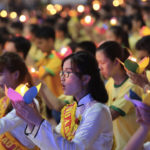A temple is an architectural structure built to serve Buddhist worship. Temples are used to worship Buddha and spread Buddhism. This is also the residence and place of activities of monks and nuns. Whether you are a Buddhist or not, you can visit the temple to listen to the sutras or pray for your family’s peace.
July has come, and it’s time to show our gratitude to our grandparents and parents for their hard work in raising us. During Vu Lan, people often flock to the temples to burn incense and pray, expressing their respect for their loved ones.
Here, we will introduce you to 5 beautiful and sacred temples in Ho Chi Minh City that you can visit during Vu Lan.
1 Phuoc Hai Temple (Ngoc Hoang Temple)
Address: 73 Mai Thi Luu, Da Kao Ward, District 1, Ho Chi Minh City
Phuoc Hai Temple is an ancient temple that most Saigonese know. It is a temple built in the architectural style of the Chinese and was initiated by Luu Minh, with the Dharma name Dao Nguyen (from Guangdong) in the early 20th century. The temple is dedicated to the Jade Emperor and is also known as the Ngoc Hoang Temple.
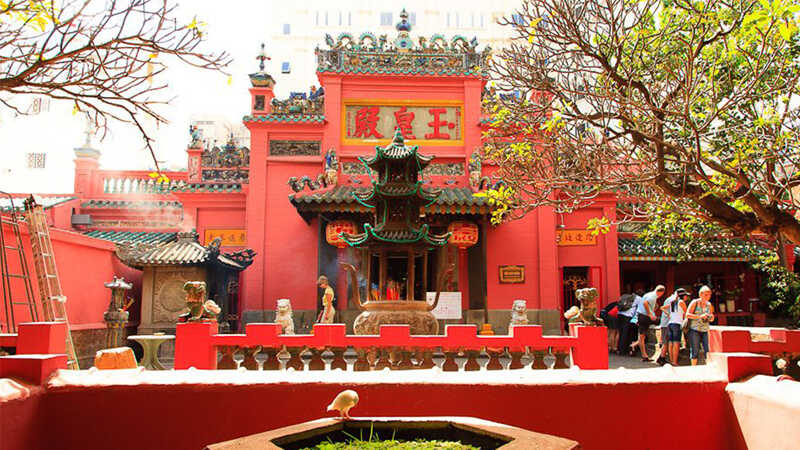 Phuoc Hai Temple
Phuoc Hai Temple
The temple has a compound of over 2000 square meters and is built with bricks and yin-yang tiled roofs. The corners of the roof are adorned with colorful ceramic statues. The temple houses many artworks: worship paintings, statues, bao lam, lien doi, huong an, etc., made from wood, ceramics, and papier-mâché. Inside the temple are three main halls: the Front Hall, the Middle Hall, and the Main Hall. The Main Hall houses the Jade Emperor, the Northern Emperor, and their heavenly soldiers and generals.
In front of the temple is a rather large fish pond with various kinds of fish. The pond on the right as you enter from the gate is for turtles. Both ponds are filled with fish and turtles of various sizes, released by worshippers.
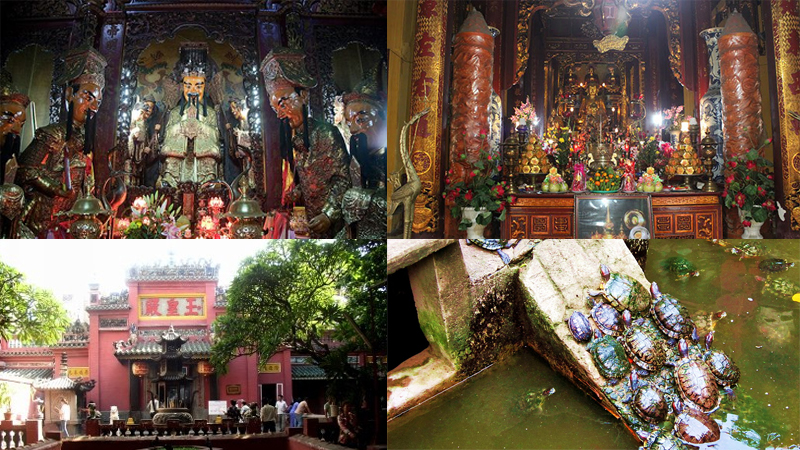 Phuoc Hai Temple Compound
Phuoc Hai Temple Compound
Ngoc Hoang Temple is considered one of the most beautiful temples in Saigon and is very sacred and suitable for praying for children as it houses the Kim Hoa Holy Mother (the goddess of childbirth) along with 12 midwives, each with a specific role: shaping the baby’s hands, feet, head, teaching them to walk and talk, etc.
Thus, the temple often receives a large number of visitors, not only on holidays but also on weekends.
2 Buu Long Temple
Address: 81 Nguyen Xien, Long Binh Ward, District 9, Ho Chi Minh City
For those in Saigon, don’t miss Buu Long Temple, a temple with magnificent Thai architecture that is no less sacred. The temple was built in 1942 and is officially named Buu Long Zen Institute.
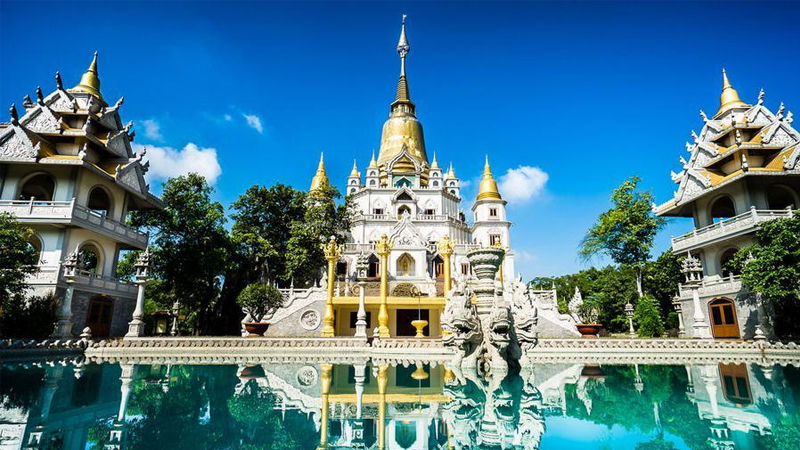 Buu Long Temple
Buu Long Temple
The temple’s architecture harmoniously blends Thai and Indian cultural influences with the architectural essence of the Nguyen Dynasty. Its 56-meter-high main stupa is considered the largest in Vietnam. Nestled amidst natural mountains and trees, the temple stands out with its palace-like architecture, predominantly white, with vibrant golden accents typical of Thai temple architecture.
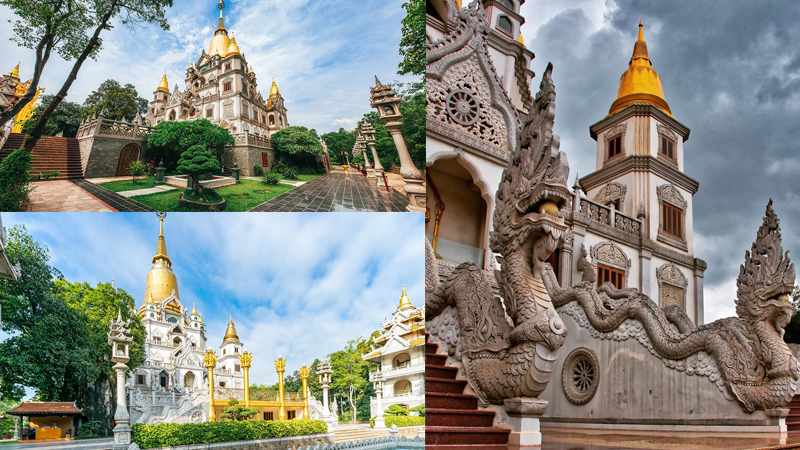 Buu Long Temple Compound
Buu Long Temple Compound
Buu Long Temple attracts many visitors, not only pilgrims but also those seeking a serene place to meditate or young people looking for a picturesque spot for photography, thanks to its location amidst natural mountains and its splendid architecture.
3 Giac Lam Temple
Address: 565 Lac Long Quan, Ward 10, Tan Binh District, Ho Chi Minh City
Giac Lam Temple is one of the oldest temples in Saigon, with a history of over 300 years. It was built in 1744 by Ly Thuy Long and was originally named Son Cang or Cam Dem Temple. In 1774, it was renamed Giac Lam, and Zen Master Vien Quang was invited to be its abbot.
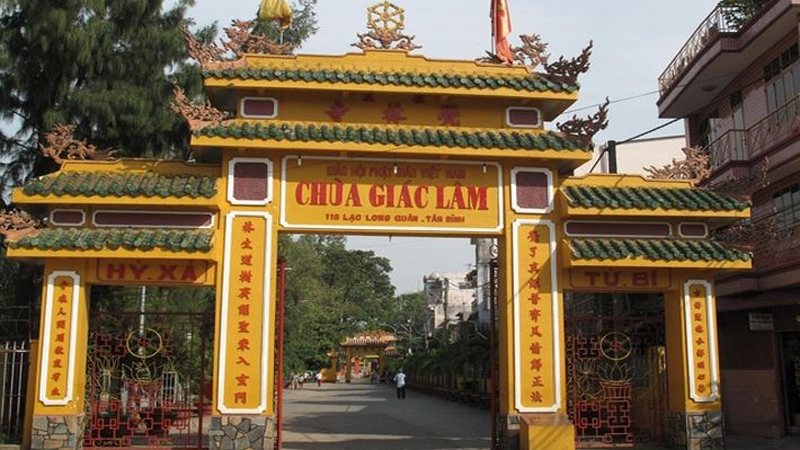 Giac Lam Temple
Giac Lam Temple
Giac Lam Temple is built in the shape of the Chinese character “Tam” (Ξ), consisting of three main halls: the Main Hall, the Lecture Hall, and the Monks’ Hall. The columns inside the temple are intricately carved with couplets.
In front of the Main Hall are statues of Buddha Amitabha, Shakyamuni, and Maitreya, while statues of Avalokitesvara and Mahasthamaprapta can be found on the altars to the sides. Along the walls are statues of the Eighteen Arhats, the Ten Kings of Hell, Bodhidharma, and the Dragon King. Behind the Main Hall is the Ancestral Hall, where former abbots of the temple are worshipped. The most remarkable feature is the 7-story stupa containing Buddhist relics, standing at a height of 32.70 meters and covering an area of over 600 square meters.
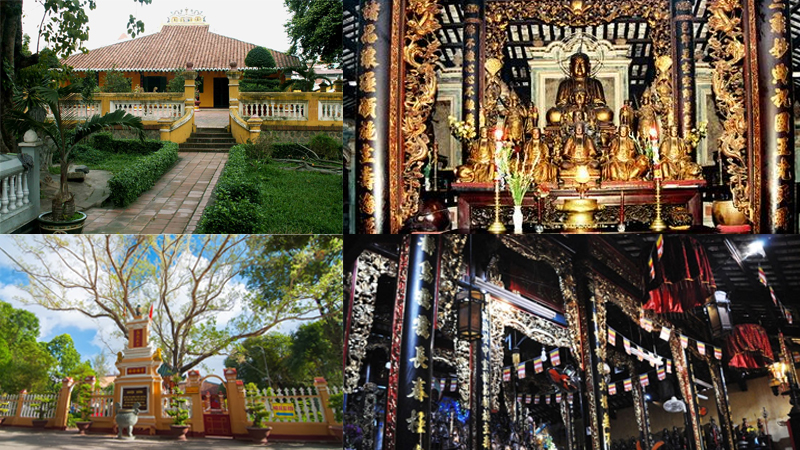 Giac Lam Temple Compound
Giac Lam Temple Compound
This is one of the most beautiful and sacred temples in Saigon. Thus, during holidays, the temple often welcomes a large number of visitors attracted by its ancient and sacred architecture.
4 Vinh Nghiem Temple
Address: 339 Nam Ky Khoi Nghia, Ward 7, District 3, Ho Chi Minh City
Vinh Nghiem is one of the most sacred temples in Saigon and was built in 1964, completing in 1971, based on the design of architect Nguyen Ba Lang. The temple covers an area of about 6,000 square meters.
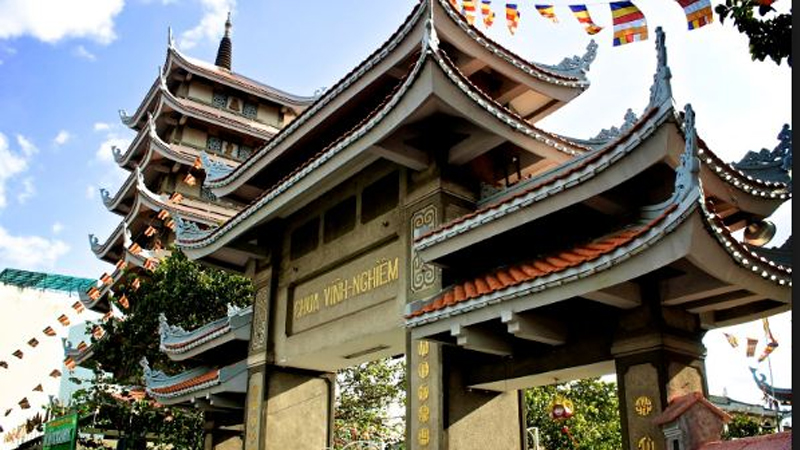 Vinh Nghiem Temple
Vinh Nghiem Temple
The main temple is built in the shape of the Chinese character “Cong”, facing northeast, with one floor and one upper story. It includes a central building (with a Buddha Hall on the upper floor), the Quan The Am Pagoda, and facilities for social activities. Later, the temple added the Community Stupa of Buddhist Relics, the Vinh Nghiem Stone Pagoda, and more.
Inside the Main Hall, you will find golden-plated Buddha statues and intricately carved pillars.
 Vinh Nghiem Temple Compound
Vinh Nghiem Temple Compound
Considered a famous landmark in the city, the temple welcomes many Buddhist followers and tourists from Vietnam and abroad daily.
5 Ba Thien Hau Temple
Address: 710 Nguyen Trai Street, Ward 11, District 5, Ho Chi Minh City
Ba Thien Hau Temple is considered one of the most sacred places in Saigon and should not be missed when visiting the city. Built in the 18th century, it has a history of over 200 years. This temple, built in the architectural style of the Chinese, is dedicated to Ba Thien Hau (Heavenly Mother), but in the Vietnamese concept, any sacred place is called a temple, hence the name Ba Thien Hau Temple.
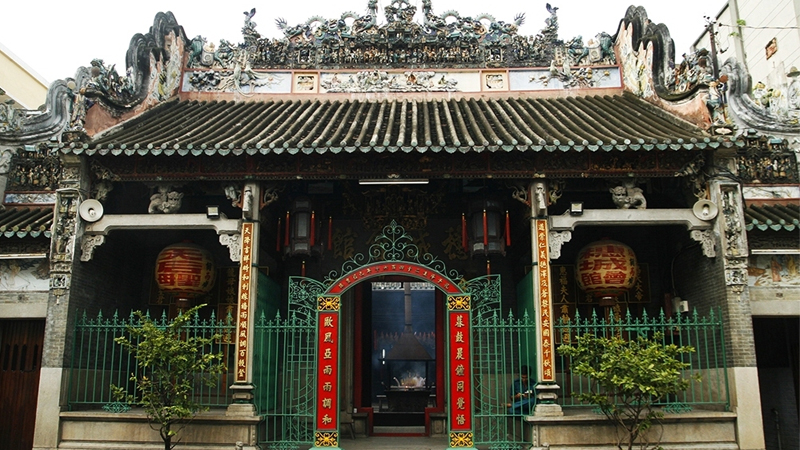 Ba Thien Hau Temple
Ba Thien Hau Temple
The temple was constructed with materials imported from China, including precious wood, incense burners, sculptures, and small statues. This highlights the importance of the temple to the Chinese community in Saigon.
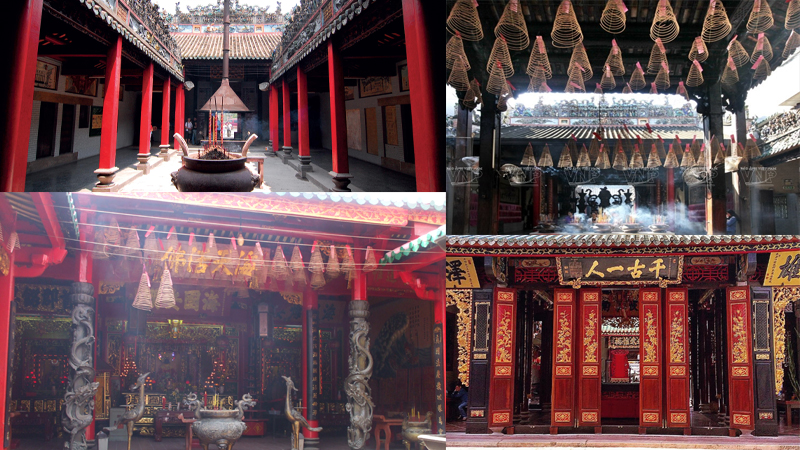 Ba Thien Hau Temple Compound
Ba Thien Hau Temple Compound
The temple features a stylized triple gate at the main entrance, with two corridors on the sides. It stands out for its intricate carvings, visible on the doors, columns, and roof, which is adorned with diverse and detailed statues of various shapes and sizes.
People visit Ba Thien Hau Temple not only to pray for peace but also to learn about the history, architecture, and culture of this ancient temple. Therefore, during holidays, the temple receives a large number of visitors.
Vu Lan is here, so choose one of these temples to visit and pray for peace and blessings for yourself and your family.
What is the 15th Day of the 7th Lunar Month? Origin and Significance Explained.
The Mid-Autumn Festival, also known as the Vu Lan Bao Hieu, is a significant Buddhist holiday in Vietnam. It is a day dedicated to honoring and expressing gratitude towards one’s ancestors, grandparents, and parents. The festival serves as a heartfelt reminder of the importance of filial piety and the value of family bonds. It is a time when children show their deepest appreciation and repay the debt of love and care owed to their elders.
Vu Lan: A Sacred Festival Honoring Compassion and Filial Piety.
Ulambana, or Vu Lan in Vietnamese, is a special occasion to honor and repay our parents’ nurturing and loving sacrifices. Mark your calendars as we commemorate this meaningful day on Wednesday, August 30, 2023. Let’s delve into the significance of this heartfelt celebration and express our gratitude and love.



























